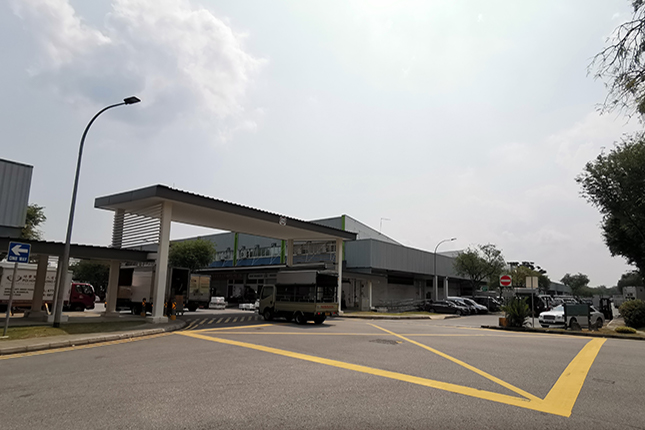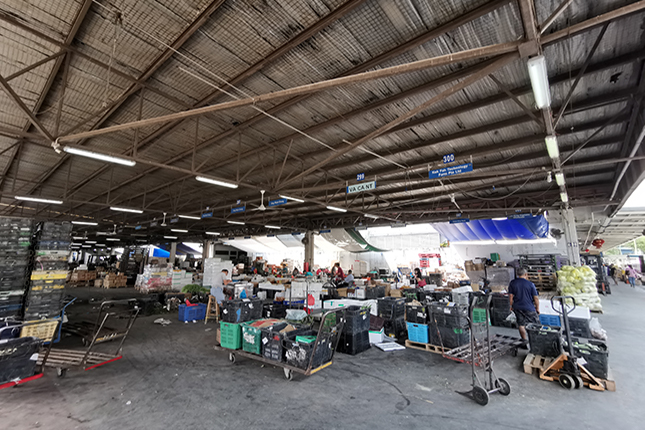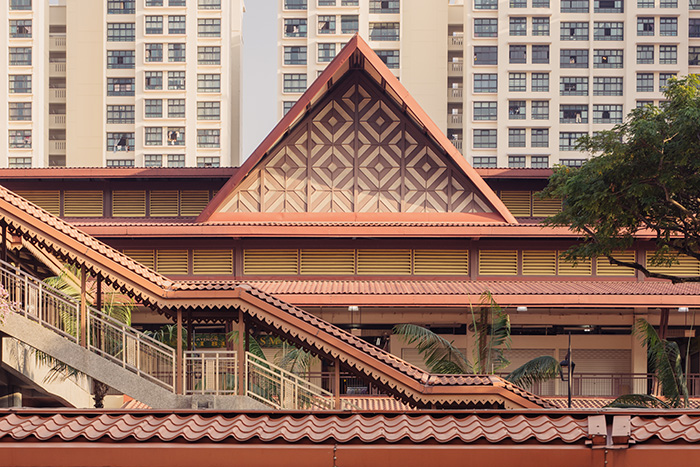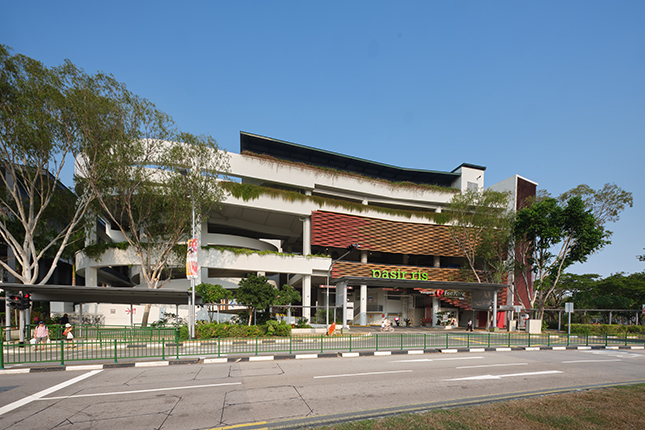Built in phases between 1981 and 1984, Pasir Panjang Wholesale Centre is well known for being the main wholesale market and distribution point for imported fruits and vegetables in Singapore. The centre was built and managed by the Housing and Development Board (HDB), and cost $88 million to construct. It included facilities such as stalls, shops, cold room spaces, a staff canteen block and an auction area.
The Centre was built to accommodate wholesalers of fruits, vegetables and dried foodstuffs who had to relocate from the city area due to urban redevelopment works. These included wholesalers from Chin Hin Street, Carpenter Street, Tew Chew Street and the Clyde Terrace Market at Beach Road. The then Second Deputy Prime Minister, S. Rajaratnam helped ensure the move was comfortable and smooth for wholesalers at the time. The transition was a sporadic one, with most wholesalers moving into the Pasir Panjang Wholesale Centre between 1983 to 1984.
During the Severe Acute Respiratory Syndrome (SARS) outbreak in 2003, the wholesale centre was shut down for more than a month due to the discovery of SARS cases at the site. During the temporary closure, the Agri-food and Veterinary Authority (AVA) set up temporary wholesale centres in public car parks and other vacant state-owned sites around Singapore.
In 2015, it was reported that the Pasir Panjang Wholesale Centre would be upgraded. The news was welcomed by wholesalers and patrons who were eager to see the Centre revamped so that it could remain a viable institution in an age of online grocery shopping.
In 2018, the management of the centre was handed over to the Agri-Food and Veterinary Authority (AVA), which was reorganised to form the Singapore Food Agency (SFA) in 2019.
Buildings and sites featured on Roots.SG are part of our efforts to raise awareness of our heritage; a listing on Roots.SG does not imply any form of preservation or conservation status, unless it is mentioned in the article. The information in this article is valid as of September 2019 and is not intended to be an exhaustive history of the site/building.

















